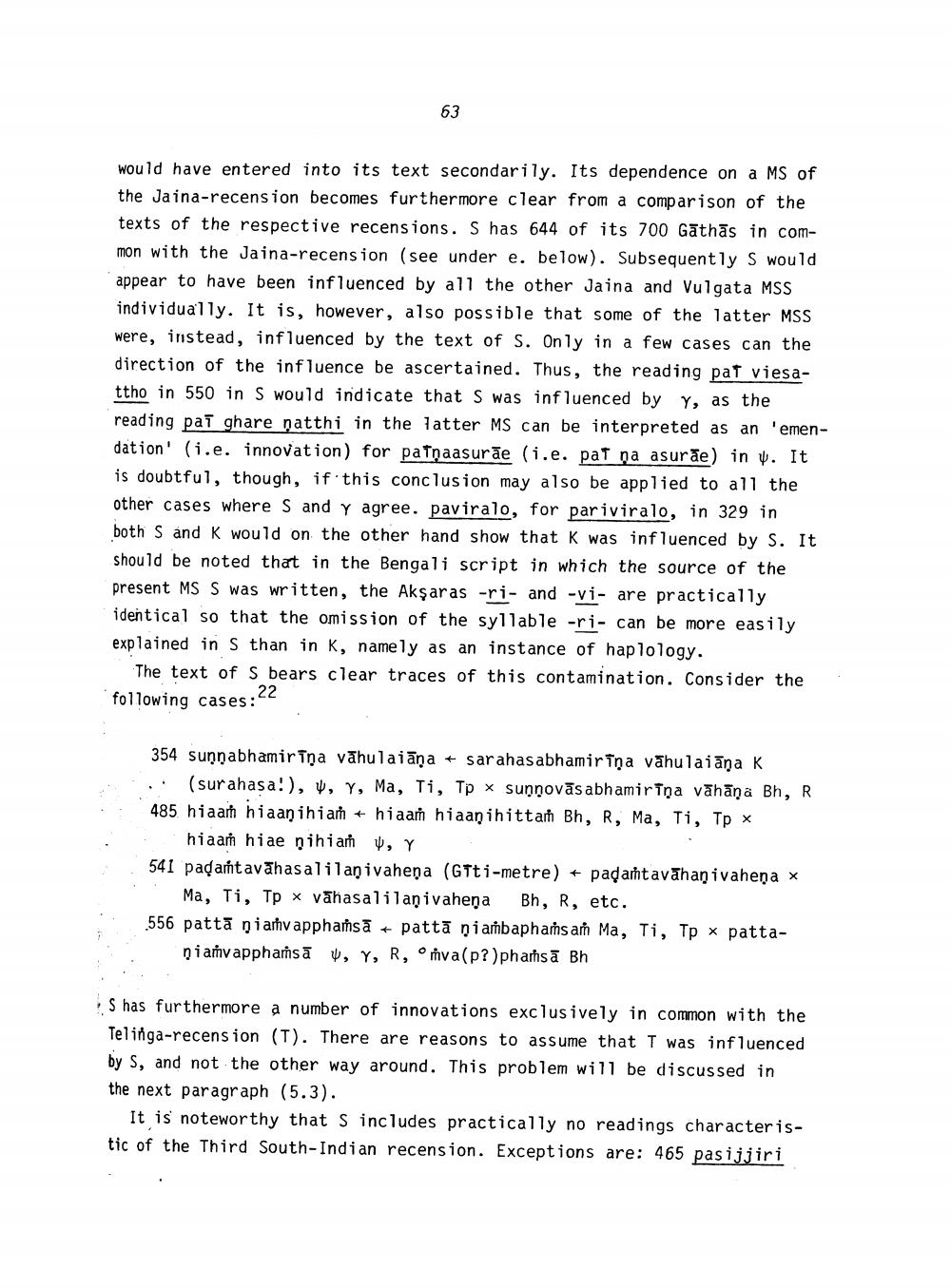________________
63
would have entered into its text secondarily. Its dependence on a MS of the Jaina-recension becomes furthermore clear from a comparison of the texts of the respective recensions. S has 644 of its 700 Gāthās in common with the Jaina-recension (see under e. below). Subsequently S would appear to have been influenced by all the other Jaina and Vulgata MSS individually. It is, however, also possible that some of the latter MSS were, instead, influenced by the text of S. Only in a few cases can the direction of the influence be ascertained. Thus, the reading pat viesattho in 550 in s would indicate that s was influenced by Y, as the reading pat ghare natthi in the latter MS can be interpreted as an 'emendation' (i.e. innovation) for patņaasurāe (i.e. pat na asure) in y. It is doubtful, though, if this conclusion may also be applied to all the other cases where S and y agree. paviralo, for pariviralo, in 329 in both S and K would on the other hand show that K was influenced by S. It should be noted that in the Bengali script in which the source of the present MS S was written, the Akşaras -ri- and -vi- are practically identical so that the omission of the syllable -ri- can be more easily explained in s than in K, namely as an instance of haplology.
The text of S bears clear traces of this contamination. Consider the following cases:22
354 sunnabhamir īņa vāhulaiāņa + sarahasabhamiriņa vāhulaiāna K .. (surahasa!), W, Y, Ma, Ti, Tp x sunnovās abhamirTņa vāhāna Bh, R 485 hiaan hiaanihian + hiaan hiaanihitta Bh, R, Ma, Ti, Tp *
hiaam hiae nihian W, Y 541 paçaṁtavānasalilanivahena (GTti-metre) + padatavāhanivahena
Ma, Ti, Tp x vāhasalilanivahena Bh, R, etc. .556 pattā niahvapphamsā + pattā ņi ambaphaṁs aṁ Ma, Ti, Tp x patta
n iavapphaṁsā U, Y, R, onva(p?)phaisā Bh
S has furthermore a number of innovations exclusively in common with the Telinga-recension (T). There are reasons to assume that I was influenced by S, and not the other way around. This problem will be discussed in the next paragraph (5.3).
It is noteworthy that s includes practically no readings characteristic of the Third South-Indian recension. Exceptions are: 465 pasijjiri




